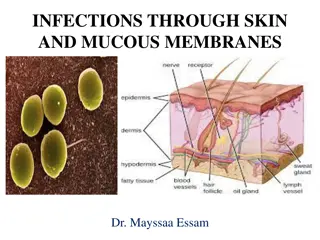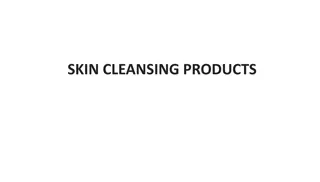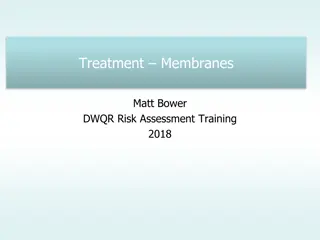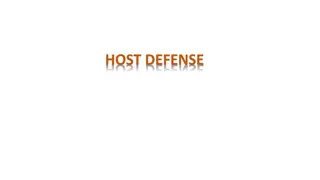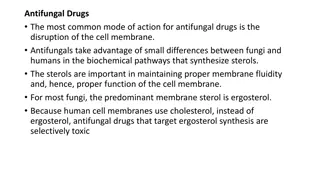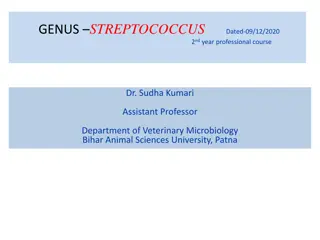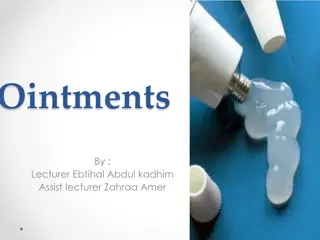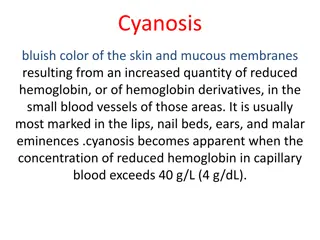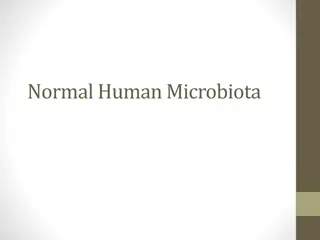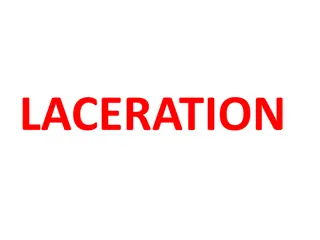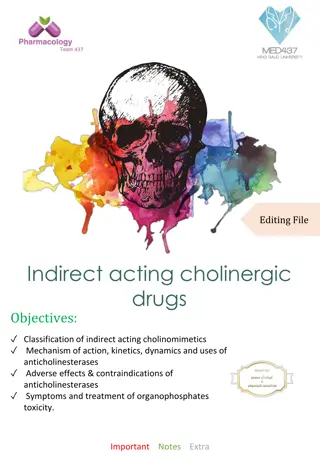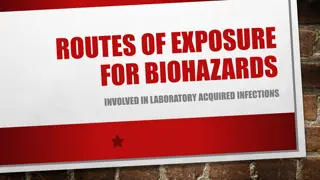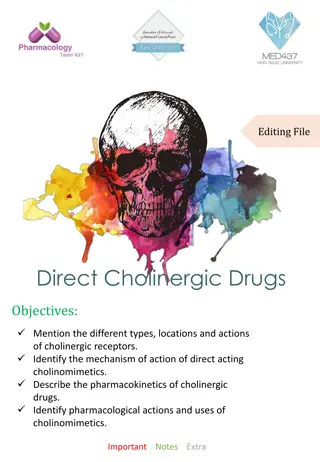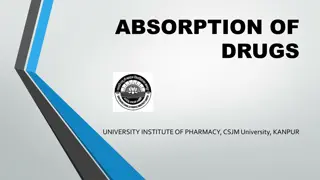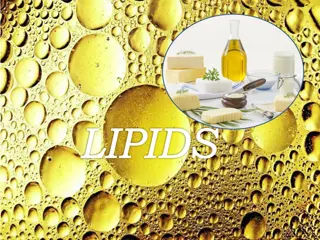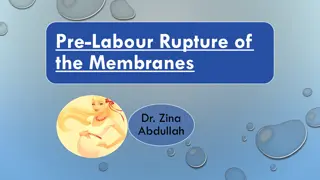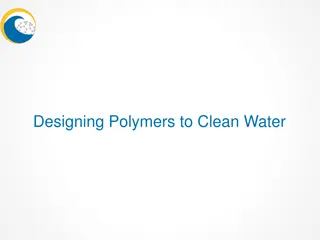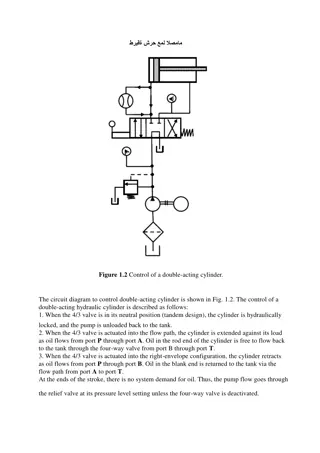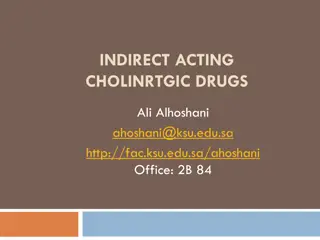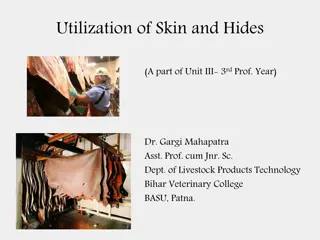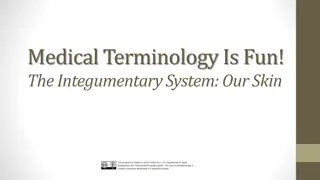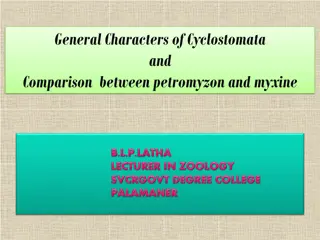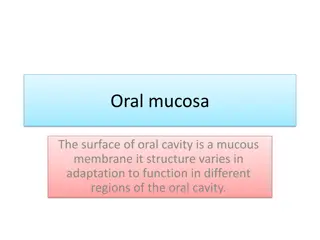Overview of Drugs Acting on Skin & Mucous Membranes
This presentation discusses different classes of drugs that act on the skin and mucous membranes, including emollients, demulcents, adsorbents, protectives, astringents, counterirritants, keratolytics, and skin disinfectants. Emollients soften and moisturize the skin, demulcents soothe irritation in mucous membranes, adsorbents and protectives provide physical protection, astringents toughen and dry the skin, and counterirritants promote healing by increasing blood flow. Each category serves specific purposes in veterinary medicine to manage skin conditions effectively.
Download Presentation

Please find below an Image/Link to download the presentation.
The content on the website is provided AS IS for your information and personal use only. It may not be sold, licensed, or shared on other websites without obtaining consent from the author. Download presentation by click this link. If you encounter any issues during the download, it is possible that the publisher has removed the file from their server.
E N D
Presentation Transcript
Drugs acting on Skin & Mucous membranes Presented by:- Dr.Archana Assistant Professor_cum_Jr .Scientist Deptt.Of Pharmacology & Toxicology Bihar Veterinary College, Patna
Content of chapter *Emollients *Demulcents *Adsorbents & Protectives *Astringents *Counter irritants *Keratolytics * Skin disinfectants
EMOLLIENTS These are bland (mild, gentle) fatty materials often used to soften or moisten the skin. These are primarily useful for treating the skin conditions resulting from water soluble irritants and air borne bacteria. eg:- Vegetable Oils: Olive oil, Corn oil, Almond oil, Animal fats: Lanolin, Lard, Whale oil. Hydrocarbons: Paraffin, Mineral oil, Vaseline
DEMULCENTS Demulcents are inert substances which sooth and relieve irritation, primarily involving the inflamed/ injured mucous membranes, these are generally high molecular weight compounds that are water soluble and function by alleviating irritation. They form a protective layer over the irritated surfaces. e.g. Glycerine, Propylene glycol, Gum tragacanth.
ADSORBENTS & PROTECTIVES: These are finely powdered, inert, insoluble solids capable of inactivating the irritants by binding to them. They exert physical protection to skin or mucous membranes. *Adsorbents act by binding gases, toxins and some organisms (such as bacteria) to prevent exposure to the damaged skin surface. e.g. Starch, CaCO3, Talc, Titanium dioxide, ZnO & Boric acid. * Protectives function by providing an occlusive layer of protection from the external environment or by providing mechanical support to the affected area. e.g. Kaolin, Lanolin, Mineral oil, Olive oil, Petroleum.
ASTRINGENTS Astringents are agents that precipitate protein, toughen the skin, promote healing and dry the skin when applied topically. eg: Callamine lotion, ZnO ointment, tannic acid etc. Astringents have limited uses in veterinary medicine today.
COUNTERIRRITANTS These are agents used to produce hyperaemia in an attempt to relieve pain and promote healing of tissues beneath skin after application over the skin, the increased blood supply results in a greater concentration of blood-borne anti-disease factors such as leucocytes, increased nutrition and an improved removal of waste products by the venous and lymphatic systems. Eg:- red iodide of mercury (25%),
Keratolytics Keratolytics are the agents acts by loosening keratin layer of the skin, which facilitates the desquamation of stratum corneum; they destroy excessive granulation, minor tumour and warts on skin. Eg:-Salicylic acid, Benzoyl peroxide Resorcinol
SKIN DISINFECTANTS Removal or reduction in bacteria on the skin by disinfectants is a useful part on the treatment of pyodermas. These agents also used used for skin disinfection prior to surgery. e.g. :- Povidone iodine, chlorhexidine, cetrimide & hexachlorophene, benzoyl peroxide etc.


